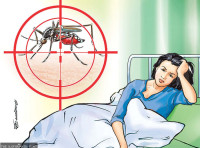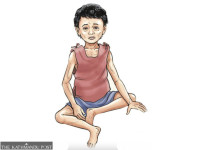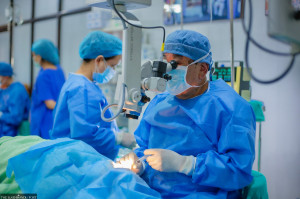Health
Most patients reach hospital after taking multiple antibiotics
Even doctors have been prescribing antibiotics for minor cough and flu cases. Experts warn of a ‘silent epidemic’ due to misuse of antibiotics.
Arjun Poudel
Last week, an 11 year-old girl from the Chabahil area of Kathmandu was rushed to the clinic of Dr Ganesh Rai, former director at the Kanti Children’s Hospital, as the girl was suffering from flu and cough. The girl’s parents said that their child did not recover, despite taking two antibiotics.
“A medical doctor visiting a pharmacy near their house prescribed antibiotics within two days of the ailment. When the ailment was not cured, another doctor prescribed another antibiotic," said Dr Rai.
“In most cases, flu and coughs get cured within seven to 10 days, and the patients do not need antibiotics. But patients and their relatives do not understand these things.”
Antimicrobial resistance has been emerging as a serious public health issue—a ‘silent pandemic’ in the country, public health experts say. The problem has reached an alarming level which most people in the country cannot imagine, according to them.
“We have to deal with multiple such cases every day,” said Rai. “If the trend of irrational antibiotic use continues, where doctors prescribe lifesaving drugs without need or proper consultation and pharmacies sell them over the counter—the day is not far when antibiotics may stop working altogether.”
When the doctor explained the conditions, under which use of antibiotics actually required, the parents of the ailing child, they persuaded. They regretted using antibiotics without consultation with experts and committed not to make such mistakes in future, according to Rai.
Doctors as well as Public health experts in Nepal have been drawing the attention of the general public and authorities concerned to the irrational use of antibiotics for years. They say that despite their efforts to make people aware of the problems, rampant use of antibiotics has been unabated.
“The burden of the problems has increased over the years,” said Dr Anup Subedee, an expert on internal medicine and infectious disease expert. “Resistance has developed even to new antibiotics introduced just a few years ago.”
While human antibiotic use contributes to antibiotic resistance, the widespread use of antibiotics in agricultural practices—most notably in livestock and poultry production—is also a potential driver.
Doctors say agricultural antibiotics contribute to the presence of resistant bacteria in meat and poultry products. In addition, resistant organisms are released from farms into soil, groundwater, and surface waterways, leading to a contamination of water sources used for crop irrigation and domestic purposes.
The World Health Organisation said antimicrobial resistance happens when bacteria, viruses, fungi and parasites change over time and no longer respond to medicines, making infections harder to treat and increasing the risk of disease spread, severe illness and death. As a result, the medicines become ineffective and infections persist in the body, increasing the risk of their spread to others.
Antibiotics, despite being prescription drugs, can be easily purchased over the counter in Nepal. Many people buy them without telling the pharmacists their exact problem. Pharmacists too do not bother to inquire and in most cases fail to emphasise the importance of completing the course of medicine, which is among the main reasons for the growing rate of antimicrobial resistance, according to experts.
Second, most of the time doctors prescribe antibiotics on the basis of clinical diagnosis, even before they get laboratory test reports. Experts say antibiotics do not work if the underlying infection is caused by a virus.
According to a 2021 study of the Nepal Health Research Council (NHRC), only 32 percent of the doctors and health workers have access to laboratories for antibiotic susceptibility testing. Among them, only 49 percent of doctors recommend antibiotic susceptibility testing before prescribing antibiotics. This means that only 16 percent of doctors recommend antibiotics after susceptibility testing.
The study also shows that more than one-third—37.8 percent—of prescribed medicines were antibiotics, which is higher than the World Health Organisation’s standards.
The study shows about a fourth (22 percent) of the outpatients did not consume a full course of antibiotics. Similarly, about 10 percent of the outpatients consume antibiotics as prophylaxis (preventive treatment) while eight percent take double-dose antibiotics for a quick recovery.
Around 22 percent of them spare residual antibiotics for use in similar symptoms in the future. Additionally, around 28 percent of outpatients said they buy antibiotics without doctors’ or health workers’ prescriptions.
The report shows that a significant number of patients do not know that a course of antibiotics must be completed and if they stop halfway, the same antibiotic may not work the next time.
The NHRC study showed around 70 percent of farmers used progressively higher doses of antibiotics and more frequently for faster recovery of sick animals or fowls.
The study identified big shortcomings in awareness and availability of national guidelines for prescribing antibiotics and infrastructures for recommending antibiotic susceptibility tests among both human and animal health professionals.
“Act Now: Protect Our Present, Secure Our Future” is a shared responsibility,” the UN health body in its statement says. “Together, we can keep antimicrobials effective and build a healthier, more sustainable world for the generations to come.”




 9.12°C Kathmandu
9.12°C Kathmandu














